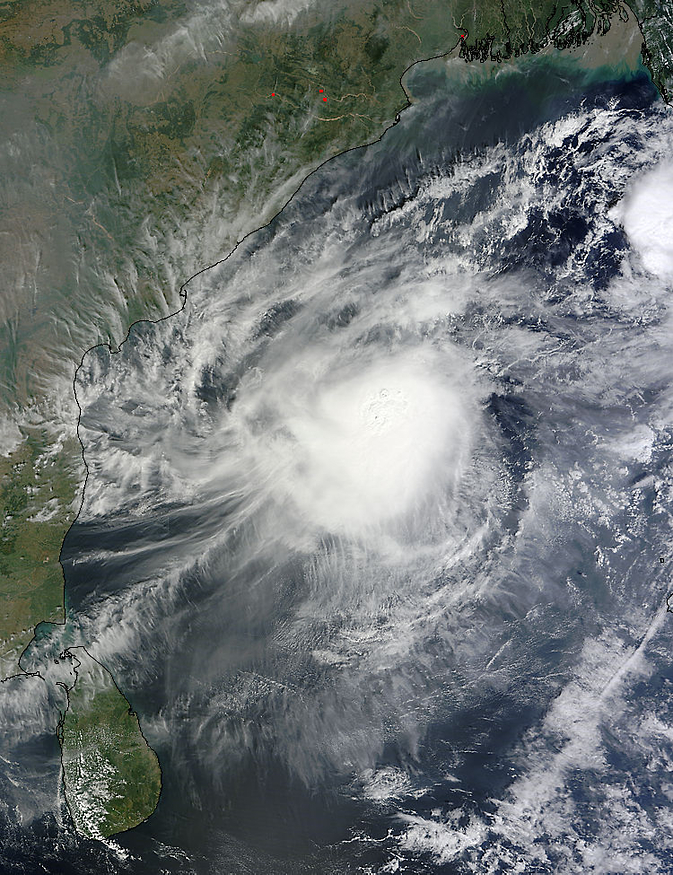

NASA's Terra satellite flew over Tropical Cyclone 5B in the Bay of Bengal on Nov. 6, 2014.
Image Credit: NASA Goddard MODIS Rapid Response Team
When Terra passed over Tropical Cyclone 5B on Nov. 6 at 05:05 UTC (12:05 a.m. EST), the MODIS instrument aboard took a visible image of the storm.
The MODIS image showed a concentrated storm with strong thunderstorms circling tight around the center and in the northeastern quadrant.
By 1500 UTC (10 a.m. EST), Tropical Cyclone 5B was located near 13.4 north latitude and 87.9 east longitude. That's about 380 nautical miles (437.3 miles/703.8 km) southeast of Visakhapatnam, India.
Tropical Cyclone 5B had maximum sustained winds near 35 knots (40.2 mph/64.8 kph). It was moving slowly to the south-southeast.
Forecasters at the Joint Typhoon Warning Center said that an upper-level (atmospheric) analysis indicates the system remains in a generally favorable environment with moderate vertical wind shear and good outflow.
Additionally, sea surface temperatures are relatively high in this region, which will help it maintain strength and slightly intensify over the next two days.
JWTC forecasters expect Tropical Cyclone 5B to make landfall near Chennai on Nov. 9 and dissipate over land quickly.
Rob Gutro
NASA's Goddard Space Flight Center












